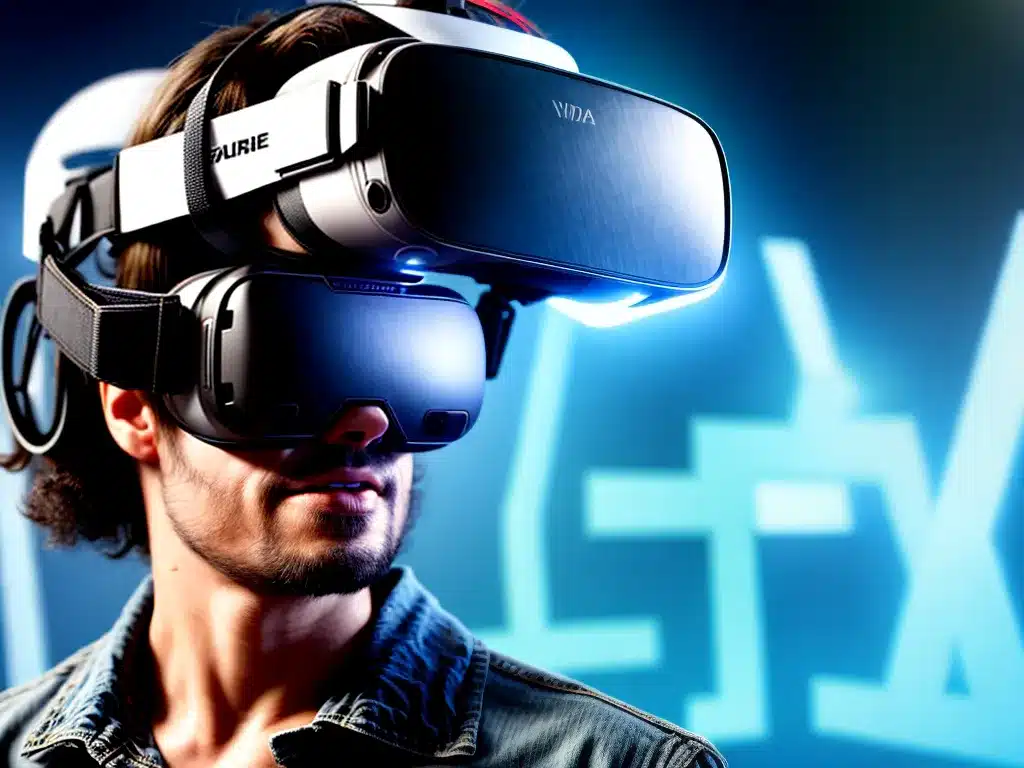
Introduction
Virtual reality (VR) and augmented reality (AR) have become buzzwords in recent years, with companies like Meta (formerly Facebook) investing billions into developing VR/AR hardware and software. However, there is still debate around whether these technologies are just a passing fad or if they will become a mainstream part of our future. In this article, I will analyze the current state of VR/AR, the potential benefits and use cases, and the challenges facing widespread adoption. My goal is to provide a comprehensive look at whether VR/AR are short-lived trends or integral parts of our technological future.
Current State of VR/AR
VR Revenue and Users
The VR market has grown substantially in recent years, but still represents a small fraction of the overall technology landscape. According to Statista, the global VR market was valued at $16.8 billion in 2021 and is forecast to grow to over $184 billion by 2026. However, there are still limitations in reaching mass consumer adoption. As of 2022, there are an estimated 11 million monthly connected VR headsets globally, compared to over 6 billion smartphones. So VR still has a long way to go in terms of household penetration.
AR Growth Potential
Augmented reality has greater potential for mass adoption in the near term since it can leverage existing smartphone hardware. There are over 400 million global active monthly AR users on phones today. And AR apps like Snapchat, Instagram, Google Maps and Pokemon Go have demonstrated consumer enthusiasm for AR experiences on mobile devices. But dedicated AR headsets are still mostly in the prototype and developer toolkit phase.
Potential Benefits and Use Cases
Immersive Experiences
- The most obvious benefit of VR/AR is the ability to deliver immersive digital experiences that blend with the real world. VR can transport users to breathtaking virtual environments, while AR overlays digital elements onto real world surroundings.
- These immersive capabilities open the door for VR/AR applications in gaming, virtual tourism, simulations, workplace training, theme park attractions, and other entertainment sectors.
Increased Efficiency and Safety
- VR simulations can help train professionals like doctors, pilots and machinery operators by creating lifelike environments to develop skills. This could drastically improve training efficiency and safety outcomes.
- AR-powered remote assistance can guide workers through repairs and operations by overlaying step-by-step instructions in their line of sight.
- AR is also being tested by some industrial firms to help warehouse pickers fill orders faster by showing digital pick paths.
Enhanced Design and Manufacturing
- VR design tools allow product developers to visualize and interact with 3D models of everything from cars to appliances to architecture. This helps speed up design iterations.
- AR is being adopted on factory floors to display real time manufacturing data and instructions to help optimize production quality and workflows.
Productivity and Collaboration
- Emerging virtual office platforms could enable more engaging remote meetings and collaboration in virtual workspaces.
- But significant AR/VR user interface and digital comfort hurdles remain compared to existing tools like video conferencing and chat.
Challenges Facing Mainstream Adoption
Hardware Limitations
- VR headsets still suffer from bulkiness, cost and mobility constraints. The top end consumer VR headsets cost $300 to $1000, while more advanced AR headsets currently market for over $3000.
- Technical capabilities in resolution, field of view and processing lag need major leaps to achieve seamless high fidelity mixed reality experiences.
User Discomfort and Health Concerns
- Long term VR usage has been linked to visual disturbances and motion sickness in some users. These adverse effects may limit willingness for prolonged usage.
- The long term health effects of mixed reality technologies is still unknown, fueling public skepticism.
Creating Compelling Use Cases
- Many current VR/AR consumer applications seem gimmicky without much added practical value over existing tools. Stronger use cases that demonstrate productivity improvements and experiential enhancements are still needed.
- VR/AR technologies may remain niche utilities until they solve very specific real world problems better than status quo alternatives.
Future Outlook
While VR/AR technologies hold tremendous promise, realizing their full disruptive potential could take decades. But if steady technical improvements help unlock new productivity use cases and consumer experiences, mixed reality devices could follow an adoption curve similar to PCs and smartphones. The companies that can best leverage VR/AR to create substantial real world value and ease consumer adoption hurdles stand to reap massive future rewards. For now, pragmatic innovation is needed to transform VR/AR from intriguing prototypes into indispensable platforms. Their long term future will depend on this pragmatic evolution from novelty to utility.












